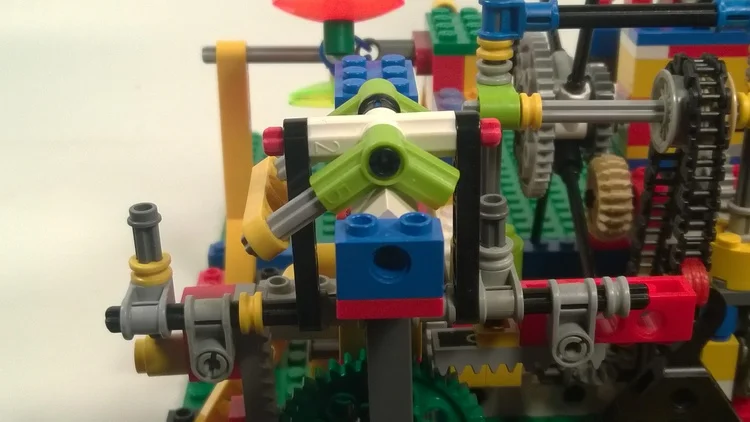Building with Limited Resources
One of the many challenges of designing and building an accurate Astronomical Clock just using Legos is the limitation of using only parts that are available. Staying true to Lego, the builder is not allowed to create new parts or modify Lego parts. Some find this frustrating. For me the challenge is a fun puzzle: How can I solve this problem just using available materials?
In other words, What You Get Is What Lego Sells (WYGIWLS, pronounced "wiggles"). That means there are no specially shaped clock escapement gears or pallets. Axle (arbor) spacing is based on standard Lego brick distances.
So the craftsmanship and innovation in the Astronomical Clock is all about using extremely limited resources in completely new ways and inventing different solutions. For example, consider that the only available gears have teeth counts in multiples of 4 (8, 12, 16, 20, 24, 36, 40), a 28-tooth differential frame gear and a 14-tooth bevel gear. There are no historical astronomical clock gear trains to copy just using these gears.
The photo above shows the only available Lego gears. On the left, gears 8 through 40 without a 28 or 32 tooth gear. The wide gears (12, 20, and 36 tooth) allow a 90-degree meshing with another wide gear or a bevel gear. The narrow gears can mesh at 90 degrees with a crown 24 gear. The loose gears rotate freely on an axle.
On the right, smallest to largest: bevel 12, bevel 14, worm gear, loose 16, loose bevel 20, bevel 20, knob 4, and crown 24. All these gears except loose 16 mesh at 90 degrees with other gears allowing the orientation of the rotation to change to another plane. It still doesn't seem like enough available gears to create the irrational numbers required for an astronomical clock.
Below, you can see there are many fractional combinations just using two gears. Using three or more gears greatly increases the available ratios but also complicates the spacing and gear meshing.
So, solving problems with limited resources takes a little more patience, forcing you to find new ways to accomplish the same task. In a future post, I'll describe the process used to design the Astronomical Clock gear trains. This is a great classroom or club lesson for teaching young innovators to solve problems with limited resources!








